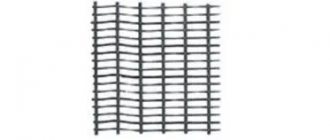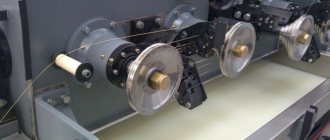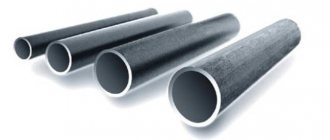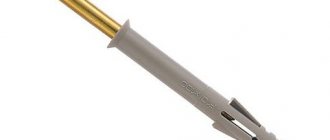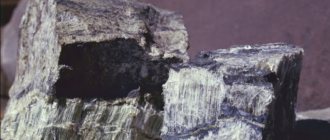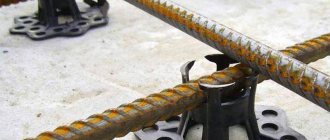The masonry mesh is made by welding pieces of wire with a diameter of 3-5 mm, located perpendicular to each other. It is a structural material necessary for strengthening brickwork and concrete products.
In addition, masonry mesh is used for:
- construction of fences;
- construction of cells;
- separation of construction bulk materials;
- strengthening arched structures;
- laying ceramic tiles.
There are several types of masonry mesh, differing in manufacturing method and purpose.
Masonry mesh for aerated concrete
To reduce the influence of tensile loads in the structures of buildings and structures made of aerated concrete blocks, it is necessary to use masonry mesh when constructing walls. The mechanical strength of aerated concrete is not enough and there is a possibility of cracks appearing in the absence of a mesh. In this case, it is necessary to take into account the type of masonry and the size of the blocks.
The conditions for using masonry mesh are as follows.
- When constructing a wall from blocks of the 625×400×250 mm format of the 1st category, with a strength of B3.5, reinforcement is not necessary.
- In the case of construction of two 200 mm blocks, masonry reinforcing mesh is required. It is laid every 4 rows in glue or solution.
- The mesh is used if the wall is built from large-format blocks with simultaneous brick cladding.
- The masonry must be reinforced with mortar from blocks of the 3rd category with a strength of B2.0. In this case, the mesh is laid every three rows.
- The masonry of the first floor of multi-storey buildings is reinforced.
There are the following types of masonry mesh for aerated concrete blocks:
- steel masonry mesh, the cell dimensions of which are 50×50 (wire diameter 3 and 4 mm);
- fiberglass and composite masonry mesh: for its production, basalt-plastic and fiberglass rods are used, laid perpendicular to each other and connected with wire clamps (glue can also be used).
When masonry reinforcement is not needed
Unconditional adherence to the construction “fashion” for reinforcement is not always necessary, - this is especially true for small individual construction: the construction of dachas, one-story residential and commercial buildings.
Typically, the wall of a house is built one and a half to two standard bricks thick. If construction is carried out without combinations with other wall materials, then reinforcement is not necessary.
To bandage the rows, it is enough to change the laying method from spoon to butt every 3-4 rows of bricks. This is how the rows are tied, and the wall becomes a strong single structure. Moreover, the reinforcement in the seams reduces the thermal insulation properties of the masonry, acting as a cold bridge.
Reinforcing the masonry of small buildings does not perform any functional tasks and leads to unreasonable additional costs. If you have doubts about the strength of the foundation, you can play it safe by installing reinforcement in the corners of the building.
Important! External walls with a thickness of 2 - 2.5 bricks have sufficient load-bearing capacity and thermal efficiency. Their additional reinforcement is recommended only in regions with increased seismic hazard.
Polymer masonry mesh
Basalt masonry or propylene mesh is used to reinforce masonry. The raw material for its production is continuous basalt fiber. With its help, a reliable connection is established between rows of blocks. The mesh retains the solution, preventing it from filling the voids, which is important for thermal insulation. Reinforcing mesh is also used for:
- floor screed device;
- applying a thick layer of plaster;
- reinforcement of interfloor ceilings;
- reinforcement of road surfaces.
Polymer masonry mesh has a number of advantages that distinguish it from similar materials.
- Polymers are resistant to the alkaline environment of cement mortar and are not subject to corrosion, which will ensure a longer service life of such a mesh.
- The polymer mesh is protected from destruction under the influence of solar radiation by elements of the building structure.
- The polymer mesh is easier to adjust to the installation site: it can be cut with metal scissors without much effort.
- Its cost is lower than that of metal mesh.
- With its help, the masonry becomes more durable, which allows you to save mortar.
- Has less weight than metal mesh.
- It is a good heat insulator and does not conduct electricity.
- Elastic, withstands significant bending loads.
- Combines well with foam and gas silicate blocks, brick, stone, and cellular concrete blocks.
Important: due to its lower mechanical strength, polymer mesh is used exclusively for the construction of lightly loaded partitions. A steel wire mesh should be laid in the load-bearing walls.
The mesh with cells 25×25 mm has the best strength indicators. In order to ensure better adhesion, polymer (acrylate) impregnation is used.
Types and characteristics of samples
On trading platforms for reinforcement you can find various types of cellular fabrics. Let's consider which mesh to use for laying bricks or blocks. Three main groups of materials are represented by the following solutions:
- Metal.
Metal mesh samples
For production, low-carbon cold-rolled steel blanks with a cross section of 3, 4 or 5 mm are used. According to GOST 6727 from 1980, rolled metal is marked as VR-1 - wire with a periodic cross-section. The elements are connected into a mesh fabric point by point using semi-automatic welding equipment. Finished products can additionally be galvanized (coating thickness is about 8 microns). On many samples, to ensure good adhesion of the metal to the masonry mortar, the rods have shallow notches.
- Basalt.
An example of a basalt fabric for masonry reinforcement.
The reinforcing fabric here is made from fibers that are formed from natural stone of volcanic origin. To tie together threads with a thickness of over 5 mm, clamp-type ties made of durable polyethylene are used. Additionally, by gluing, fine-grained mineral chips can be applied to the material in order to improve adhesion to the masonry mortar. The advantage of such a mesh for brickwork over its metal counterpart is mainly in its resistance to corrosion, environmental friendliness and durability.
- Fiberglass. This is an alternative, relatively low-cost solution for the construction of structures with low operational load. It is sold in rolls of various widths (usually 500, 1000 and 2000 mm). That is, you can find ready-made strips that you don’t have to cut. The plastic sheet is produced with a reinforcing polymer coating and has a monolithic structure
Fiberglass mesh
Metal masonry mesh for blocks lasts more than 15 years. The material is able to withstand heavy loads (the higher the indicators, the smaller the cell size). Alternative options differ not only in their chemical inertness, but also in their lower ability to conduct heat. Craftsmen also highlight low weight, simple cutting, low cost and, to varying degrees, elasticity and tensile strength.
Weight of masonry mesh
Masonry mesh is made from various materials and comes in different thicknesses of rods. The difference may be in the cell parameters, the presence or absence of coverage. All these factors influence her weight. You can calculate it using the special program LotServisCalc 3.3 (weight calculator), but there is a manual calculation method. To do this, we perform the following steps.
- We know that mass is equal to the product of volume and density, that is: m = V × p. We calculate the volume of the wire as V = S × L, where S is its cross-section, L is its length.
- It is noted that the total length of the wire depends on the mesh size and mesh area. From this we can calculate, for example, that to produce 1 m² of mesh with a cell of 10×10 cm, it is necessary to lay 11 pieces of 1 m each in one direction and the same number in the other. A total of 22 m of wire will be required.
- The cross section is calculated using the formula: S = π D²/4.
- To determine the mass of the mesh, we use the expression: m = π D² L ρ/4000, where L is the length of the wire, ρ is the density of the material (reference data).
The mesh is most often made from round wire, but oval, rectangular and segment wire can also be used. Then the calculation of mass is performed in a similar way, but formulas are used to calculate the cross-section of an oval, rectangle and segment, respectively.
Let us indicate, for example, some parameters and standard sizes of masonry mesh cells:
- 3Вр1, weight 1 m² - 2.21 kg, cell size - 50x50 mm;
- 3Вр1, weight 1 m² - 0.99 kg, cell size - 100x100 mm;
- 3Вр1, weight 1 m² - 0.72 kg, cell size - 150x150 mm;
- 4Вр1, weight 1 m² - 3.62 kg, cell size - 50x50 mm;
- 4Вр1, weight 1 m² - 2.02 kg, cell size -100×100 mm;
- 4Вр1, weight 1 m² - 1.24 kg, cell size -150×150 mm.
Marking
To select the desired type of mesh, you need to pay attention to the marking - designation , which contains the following information:
- mesh name or manufacturer's trademark;
- type of product, which is presented in the form of the formula: xC x d / d1 x b x l, where x is the type of mesh;
- C - name of the welded mesh;
- d and d1 - diameters of longitudinal and transverse rods indicating the steel class;
- b and l are the width and length of the mesh;
- number of products;
- package weight;
- date of manufacture.
Symbols for welded galvanized mesh provide a quick selection of the necessary materials . A correctly selected mesh is a guarantee of high quality of implemented projects, their reliability, durability and compliance with the required standards.
Galvanized welded mesh. Kolchuga Photos
Read also:
